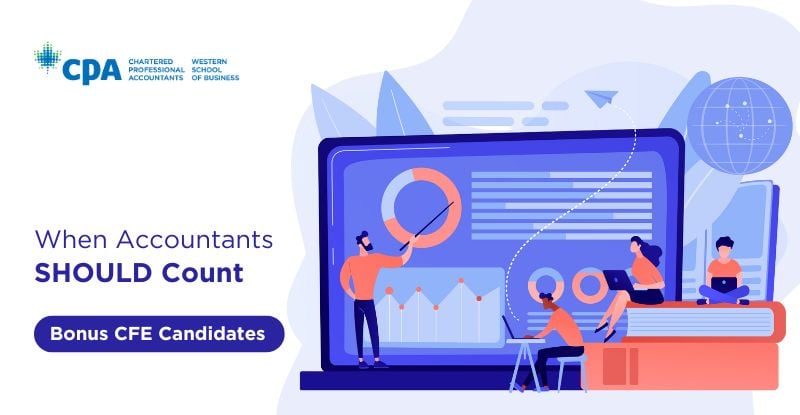
Photo credit: VisualGeneration/Depositphotos.com
In my last post, I discussed what CFE candidates shouldn’t count when it comes to Assessment Opportunities (AOs) and Requireds. Below, I will suggest what they should be accounting for instead.
Typically, by completing a thorough review, including debriefing the National Marking Centre’s feedback, you will see steady increases over time – though “ups and downs” can still occur. That is why it is important to track so we can see that a bad result is an outlier – not a pattern.
Candidates will receive a “score” at the bottom of their marked FGs (or will create that score when filling out an FG for the self-assessed cases). Candidates can take that score and compare it to other candidates’ performance via the Quartile document available in the cases’ debrief materials. By doing this, candidates can see where they stand relative to other candidates who wrote that same case during Capstone 2.
While scoring in an upper quartile (i.e., quartile 1 or 2) does not directly indicate you will pass all four levels, it is a good indicator that you have sufficient breadth and depth for the AOs for that case. Conversely, lower quartile performance (i.e., quartile 3 or 4) indicates that you are performing relatively low compared to your cohort and could signal an area of improvement you should likely direct your immediate attention to.
Even though I wrote my accounting final examination 14 years ago, I still remember that summer. People told me to enjoy it. They said I was so lucky to have some time to dedicate to studying. I can tell you that I didn’t feel lucky then, I felt stressed. That said, I knew that all I could do was control the controllable, surround myself with positive and supportive people, and do my best every study day – where one of my most effective tactics included study breaks and days off.
Like at the CFE, life will have “test” days. In a way, we are all preparing for that next “test”—either literally or metaphorically. And with that in mind, we study and “life” on.
What to do instead
Tracker
You have a performance tracker for your Capstone 2 cases under the Content section of your module homepage. Please consider using this to see how your performance changes over time.Typically, by completing a thorough review, including debriefing the National Marking Centre’s feedback, you will see steady increases over time – though “ups and downs” can still occur. That is why it is important to track so we can see that a bad result is an outlier – not a pattern.
Quartiles
Candidates will receive a “score” at the bottom of their marked FGs (or will create that score when filling out an FG for the self-assessed cases). Candidates can take that score and compare it to other candidates’ performance via the Quartile document available in the cases’ debrief materials. By doing this, candidates can see where they stand relative to other candidates who wrote that same case during Capstone 2. While scoring in an upper quartile (i.e., quartile 1 or 2) does not directly indicate you will pass all four levels, it is a good indicator that you have sufficient breadth and depth for the AOs for that case. Conversely, lower quartile performance (i.e., quartile 3 or 4) indicates that you are performing relatively low compared to your cohort and could signal an area of improvement you should likely direct your immediate attention to.
Closing thoughts
Even though I wrote my accounting final examination 14 years ago, I still remember that summer. People told me to enjoy it. They said I was so lucky to have some time to dedicate to studying. I can tell you that I didn’t feel lucky then, I felt stressed. That said, I knew that all I could do was control the controllable, surround myself with positive and supportive people, and do my best every study day – where one of my most effective tactics included study breaks and days off. Like at the CFE, life will have “test” days. In a way, we are all preparing for that next “test”—either literally or metaphorically. And with that in mind, we study and “life” on.
Do you have feedback on this post or a question you’d like answered by an experienced CPAWSB educator? Please contact your facilitator or send a question to the General Topic in the Candidate Discussion forum.

Samantha Taylor, PME, CPA, CA
Samantha Taylor, PME, CPA, CA, is an educator and lead policy advisor for CPAWSB and a Senior Instructor of accounting at Dalhousie University. She is on a mission to understand and enable learner efficacy while eliminating doldrums occasionally associated with accounting education. Read more of Sam’s posts at the CPAWSB blog.



